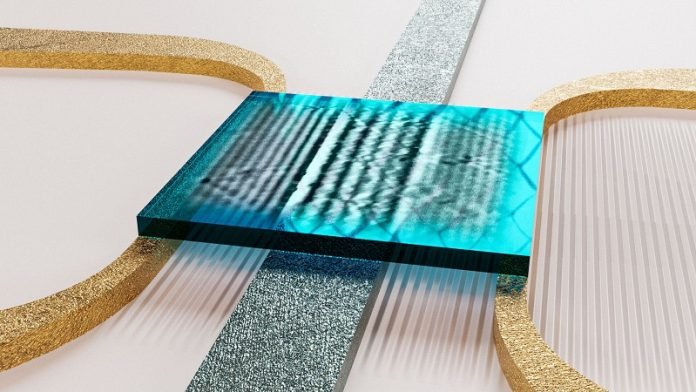
Have you ever wondered what powers your gadgets, like phones and computers?
Inside, there are tiny parts that move electric currents to make things work.
But what if there was a cooler way to do this?
Scientists from Delft University of Technology think they’ve found it. They’ve discovered a way to control little waves in magnets using materials that become super cool (called superconductors).
This might sound like magic, but it’s all science!
What are these magnetic waves?
These waves, known as “spin waves,” move inside certain materials. Think of them as ripples in a pond, but for magnets.
These ripples can carry information, like how electrical currents do in our devices. Scientists believe these waves can be the future of electronics, and they’re way more energy-efficient.
Michael Borst, the main scientist behind this, says, “We’ve been trying to find ways to control these spin waves for a long time. They could be the next big thing in making devices that use less energy.”
What’s the big discovery?
Usually, to control these waves, you’d use metal parts. But in most experiments, this hasn’t worked very well. The exciting thing the scientists found out? If you use super cool materials (superconductors) instead of regular metal, you can control these waves way better!
Here’s a simple way to think about it: Imagine the spin wave is like light. When it hits a mirror (the supercool material), it bounces back. So, these superconductors act like mirrors for the spin waves. This “reflection” slows down the spin waves, making them easier to control.
“When these waves go under our super cool material, they change completely. We can even control how much they change by adjusting the temperature a little,” Borst explains.
The scientists started with a special kind of magnet, which is known to be one of the best magnets on Earth. On top of this, they added their supercool material and another piece to create the spin waves. They cooled everything down to a super chilly temperature, making the material superconducting (or super cool).
Toeno van der Sar, another scientist on the team, shares, “It was incredible to see the spin waves slow down as things got colder. This lets us control them in many ways! Plus, we learn so much more about these super cool materials.”
To see these waves in action, they used a special kind of sensor, like a camera that can see the waves. “Imagine being able to see through walls. Our sensor lets us see these waves through the supercool material, kind of like how doctors use MRI machines to look inside our bodies,” Van der Sar says.
While this spin wave technology is still new, it has a lot of potentials. Borst believes, “We’re just starting, but imagine super-efficient computers using this technology! Our discovery is like opening a door to many new devices.”
Van der Sar adds, “We can create gadgets with these waves and supercool materials that don’t get too hot or make noise. Imagine parts inside your phone or even new parts in super-advanced computers!”
Key Takeaways
There’s a world inside our gadgets that most of us never see. And in this hidden world, scientists are always searching for better, cooler ways to make things work.
This discovery of controlling waves in magnets with super cool materials might just be the next big leap in how our future devices are powered!
Follow us on Twitter for more articles about this topic.



